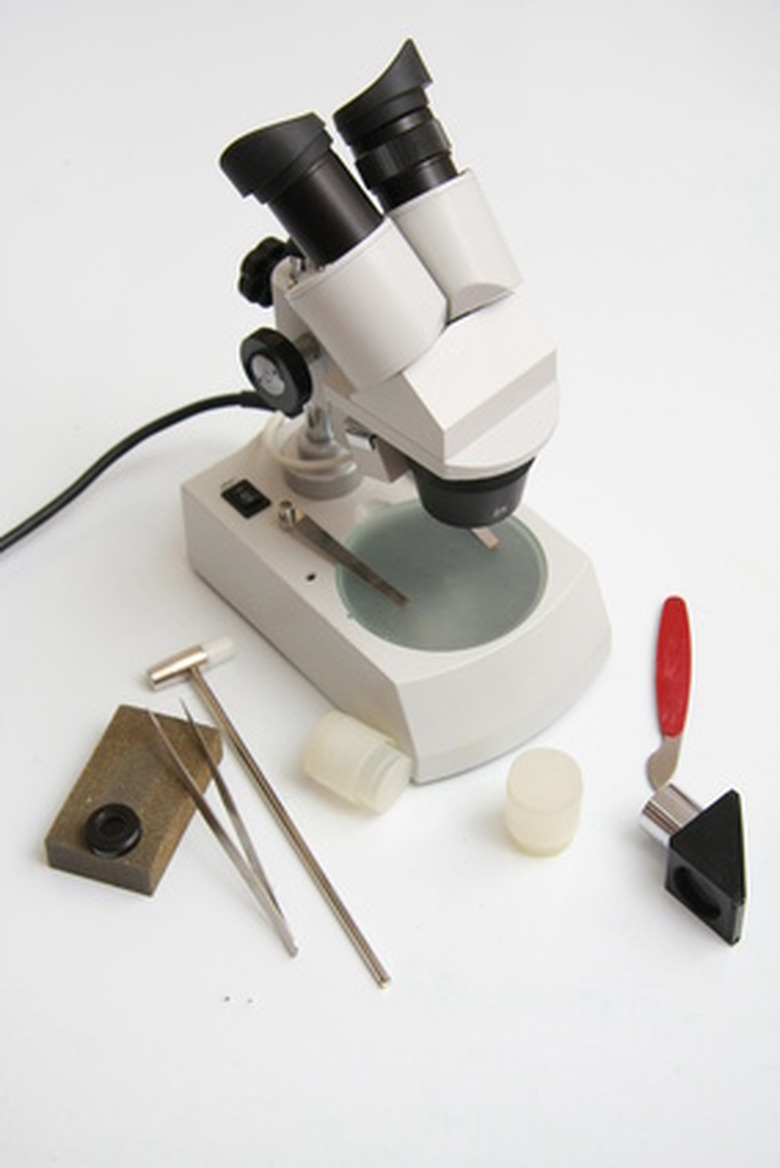How To Estimate The Size Of A Specimen With A Microscope
Compound microscopes are capable of magnifying objects up to 1,000 times. Specimens smaller than can be seen with the naked eye — objects as small as 100 nanometers — can be seen in detail with these microscopes. Estimating the size of different specimens can be done using a slide rule or a transparent metric ruler in conjunction with the different objective lenses. By measuring the field of view, we can guess the relative size of the specimen. Because not all microscopes are the same, the fields of view are different and need to be calibrated to get an accurate measurement.
Step 1
Switch on the microscope, and select the lowest-power objective lens, usually 4x. Place the slide scale or transparent metric ruler on the stage and bring it into focus in the eyepiece.
Step 2
Position the ruler so that the outer edge of one of the black hash marks is flush with the widest edge of the field of view. Count the number of lines and spaces it takes to cross the field of view to find its diameter. For example, if four black lines and half the fourth space are visible, we can say the field of view is 4.5 mm in diameter.
Step 3
Switch to the next highest objective lens and reposition the slide ruler to measure the field of view. Repeat this for all the objective lenses.
Step 4
Place the specimen on the stage and select the most appropriate objective lens. The objective lens that allows you to fill most of the field of view is the best for estimating size. Estimate the size of the specimen using the field-of-view measurements as a guide. For example, if there is about half a millimeter of empty space on either side of the 4x lens, which we measured at 4.5 mm, the specimen would be 3.5 mm.
TL;DR (Too Long; Didn't Read)
The specimen should come close to filling the field of view, but should not fill it entirely. Leave a little empty space to subtract out in your measurements.
Warning
Always put the specimen on the stage under the lowest power to avoid damaging the slides and the lenses.
Cite This Article
MLA
Goldstein, Mike. "How To Estimate The Size Of A Specimen With A Microscope" sciencing.com, https://www.sciencing.com/estimate-size-specimen-microscope-7492204/. 24 April 2017.
APA
Goldstein, Mike. (2017, April 24). How To Estimate The Size Of A Specimen With A Microscope. sciencing.com. Retrieved from https://www.sciencing.com/estimate-size-specimen-microscope-7492204/
Chicago
Goldstein, Mike. How To Estimate The Size Of A Specimen With A Microscope last modified March 24, 2022. https://www.sciencing.com/estimate-size-specimen-microscope-7492204/
